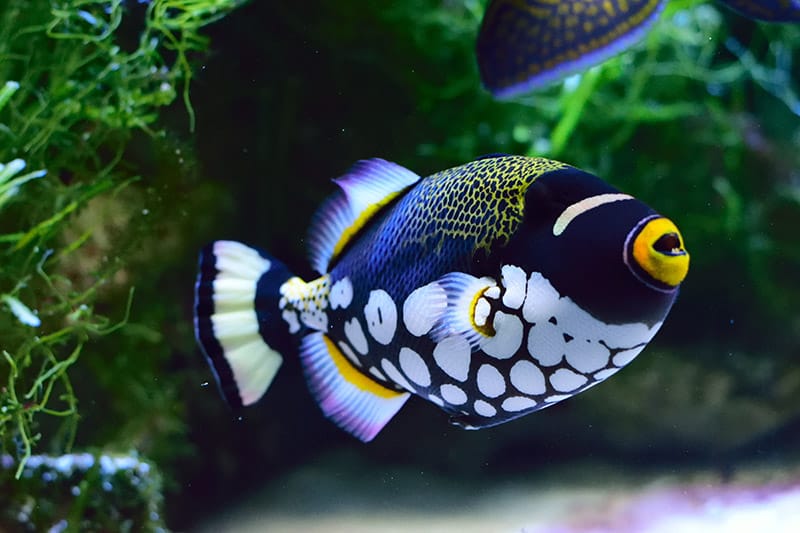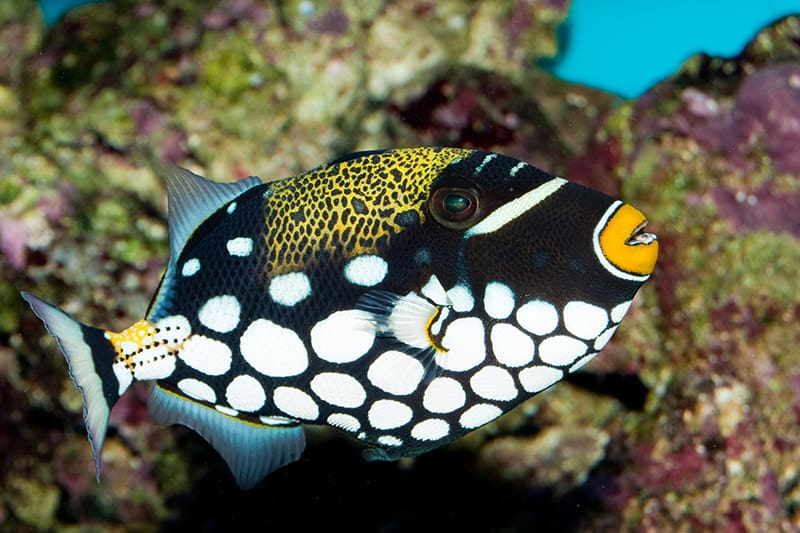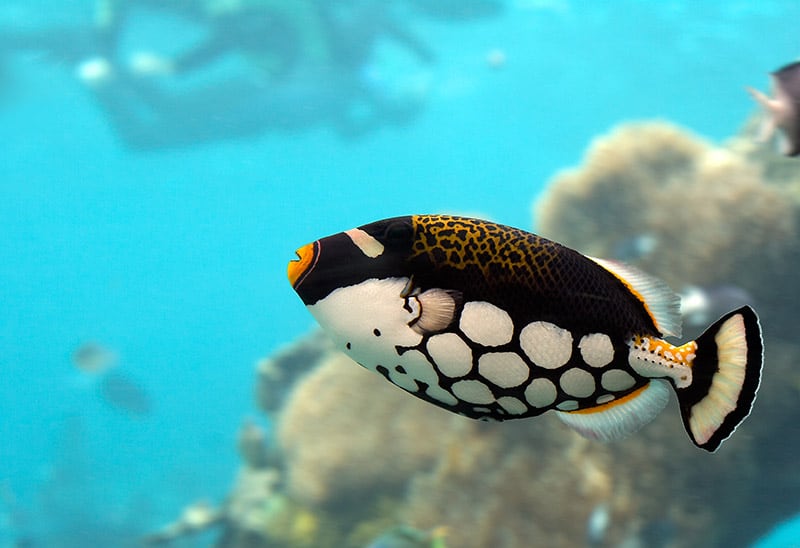This has got to be the most creatively designed fish! What an incredible combination of patterns, and fun colors! The Clown Triggerfish or Big-spotted Triggerfish just makes you want to smile!
The Clown Triggerfish or Big-spotted Triggerfish is one of the most spectacular looking marine species. The round spots on the lower side of the body and the ‘cigar’ lips give it the name ‘Clown’.
Like all triggers, they need lots of space, a cave or rocks to retreat into, and house them with other appropriate fish that have similar needs and can hold their own. These guys are usually expensive but are very hardy once they are eating well. They are worth every bit of the price because of the unique appearance they will give your aquarium!
- For more Information on keeping this fish see: Guide to a Happy, Healthy Marine Aquarium
Scientific Classification
| Kingdom: | Animalia |
| Phylum: | Chordata |
| Class: | Actinopterygii |
| Order: | Tetraodontiformes |
| Family: | Balistidae |
| Genus: | Balistoides |
| Species: | conspicillum |
Maintenance difficulty
The Clown Triggerfish or Big-spotted Triggerfish is easy to keep. Triggers are among the hardiest of all marine fish.
Maintenance
Feed all kinds of live, frozen, and flake foods. Best to feed small amounts several times a day. We generally feed squid, shrimp (the same kind people eat), mussels, and all kinds of chopped up fish.

Habitat: Natural geographic location
Clown Triggerfish or Big-spotted Triggerfish are found in the Indo-Pacific: East Africa south to Durban, South Africa and east through Indonesia to Samoa, north to southern Japan and south to New Caledonia. Lives in clear coastal to outer reef habitats. Occurs in clear seaward reefs adjacent to steep drop-offs. A solitary species. Uncommon to rare throughout most of its range. Adults usually seen along deep drop-offs, swimming about openly and may retreat to caves when approached. Juveniles secretive in small caves with rich invertebrate growth.
Foods
In the wild, the clown triggerfish diet consists of sea urchins, crabs and other crustaceans, mollusks, and tunicates. In the aquarium they should be fed all kinds of meaty marine foods, cut up fish, shrimp, squid, etc.
Social Behaviors
Aggressive, do not keep with smaller fish. Do not keep with invertebrates!
Sexual differences
Recommended light levels
Temperature
No special requirements. Normal temperatures for marine fish is between 74 and 79 degrees fahrenheit.

Length/Diameter of fish
Clown Triggerfish or Big-spotted Triggerfish adults can grow to 50.0 cm (20 inches).
Minimum Tank Length/Size
A minimum 100 gallon aquarium is recommended.
Water Movement: Weak, Moderate, Strong
Water Region: Top, Middle, Bottom
Availability
This fish is available from time to time.
- Beginner Fish – Saltwater fish for beginners
- Community Fish – Peaceful Saltwater fish
- Hardy Fish – Hardy Saltwater fish
Featured Image Credit: Ian Scott, Shutterstock
